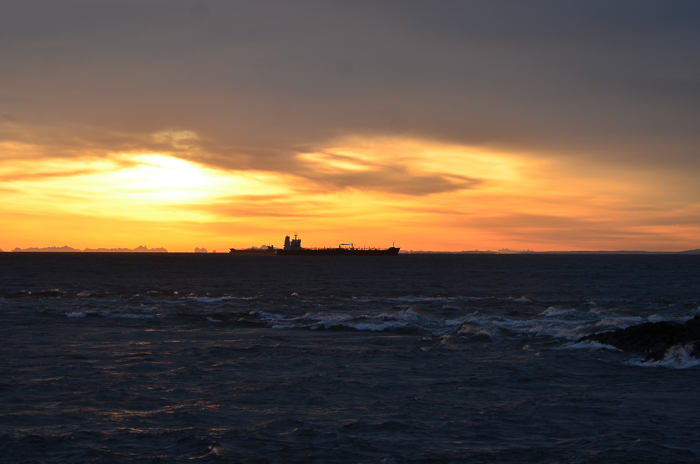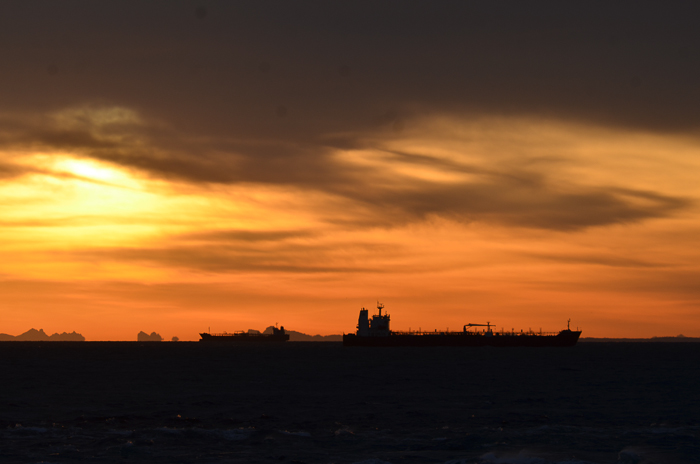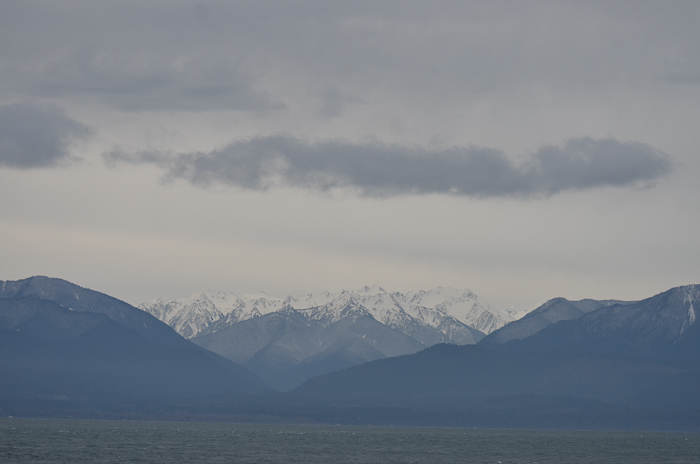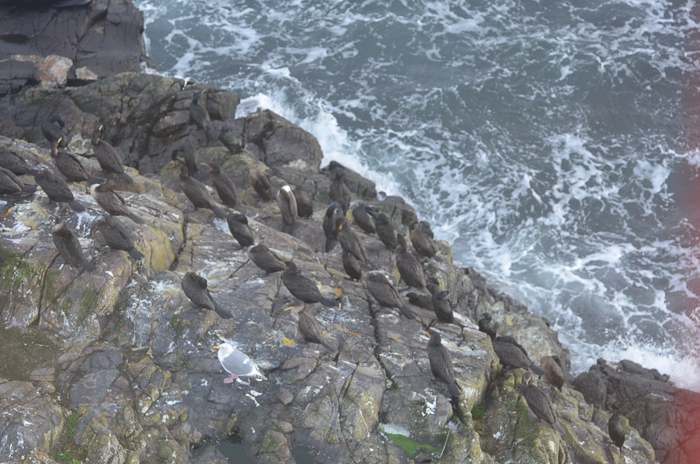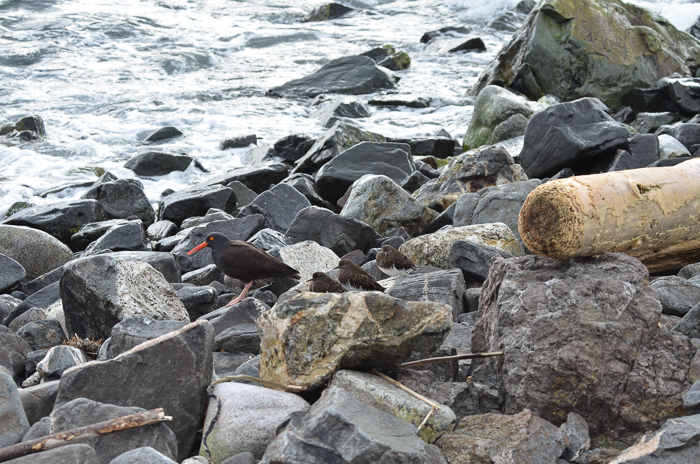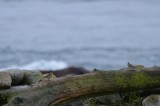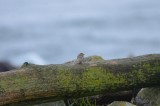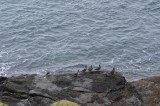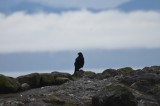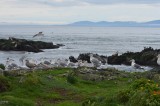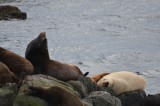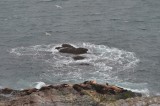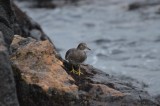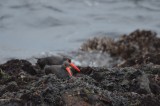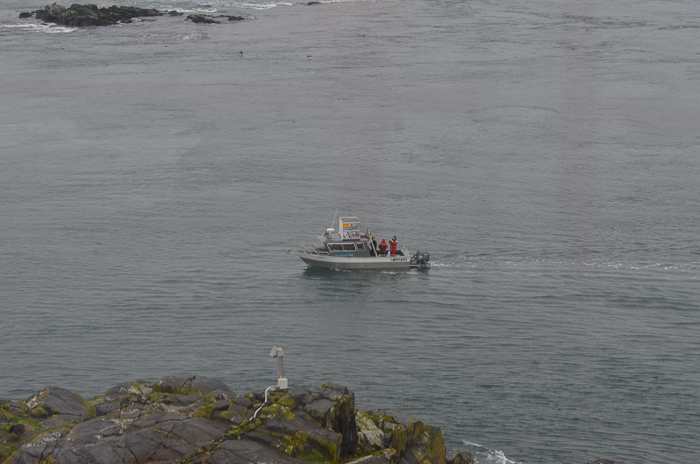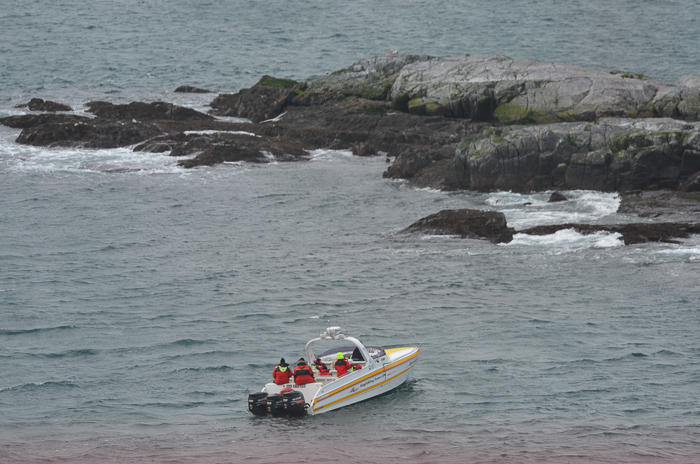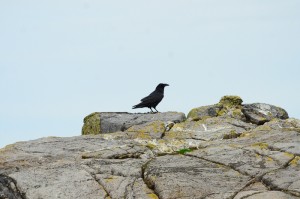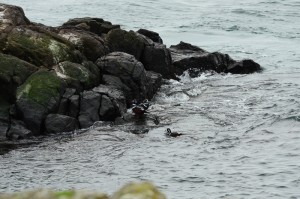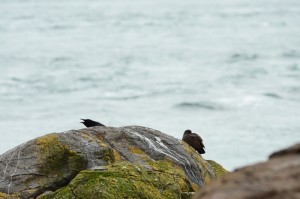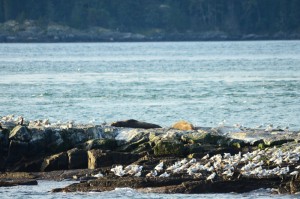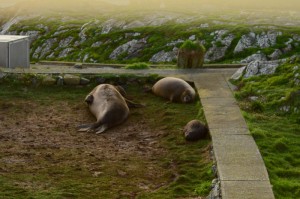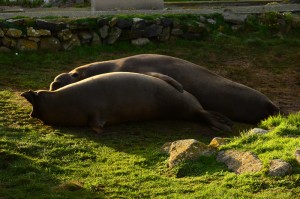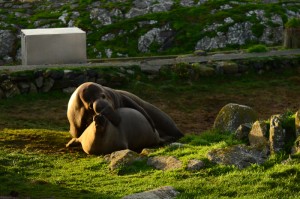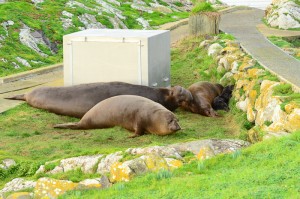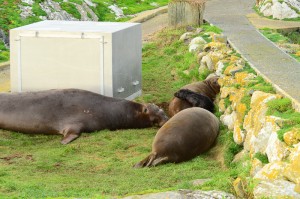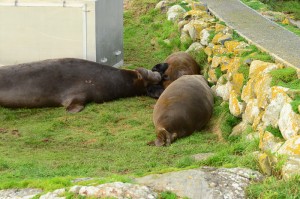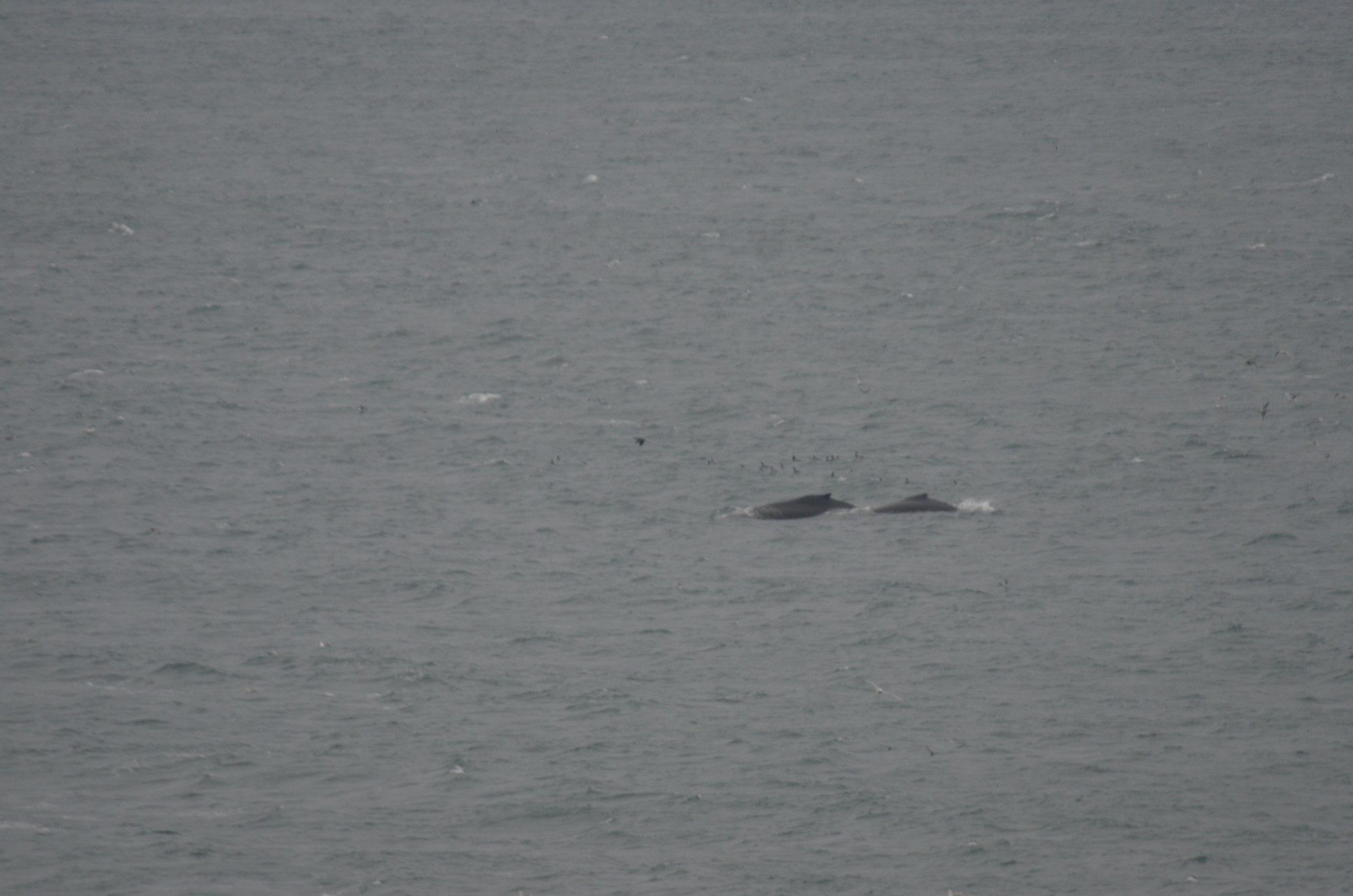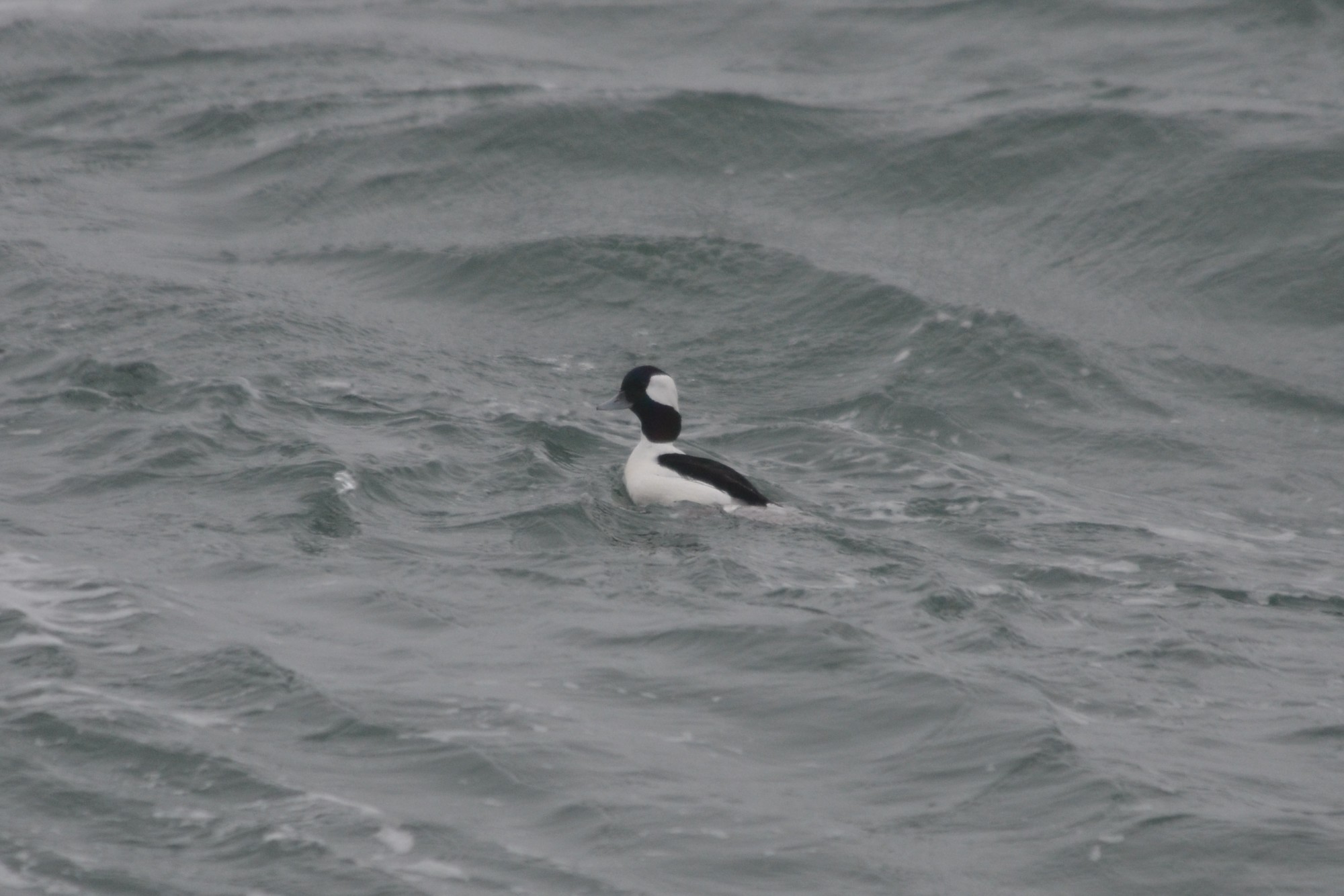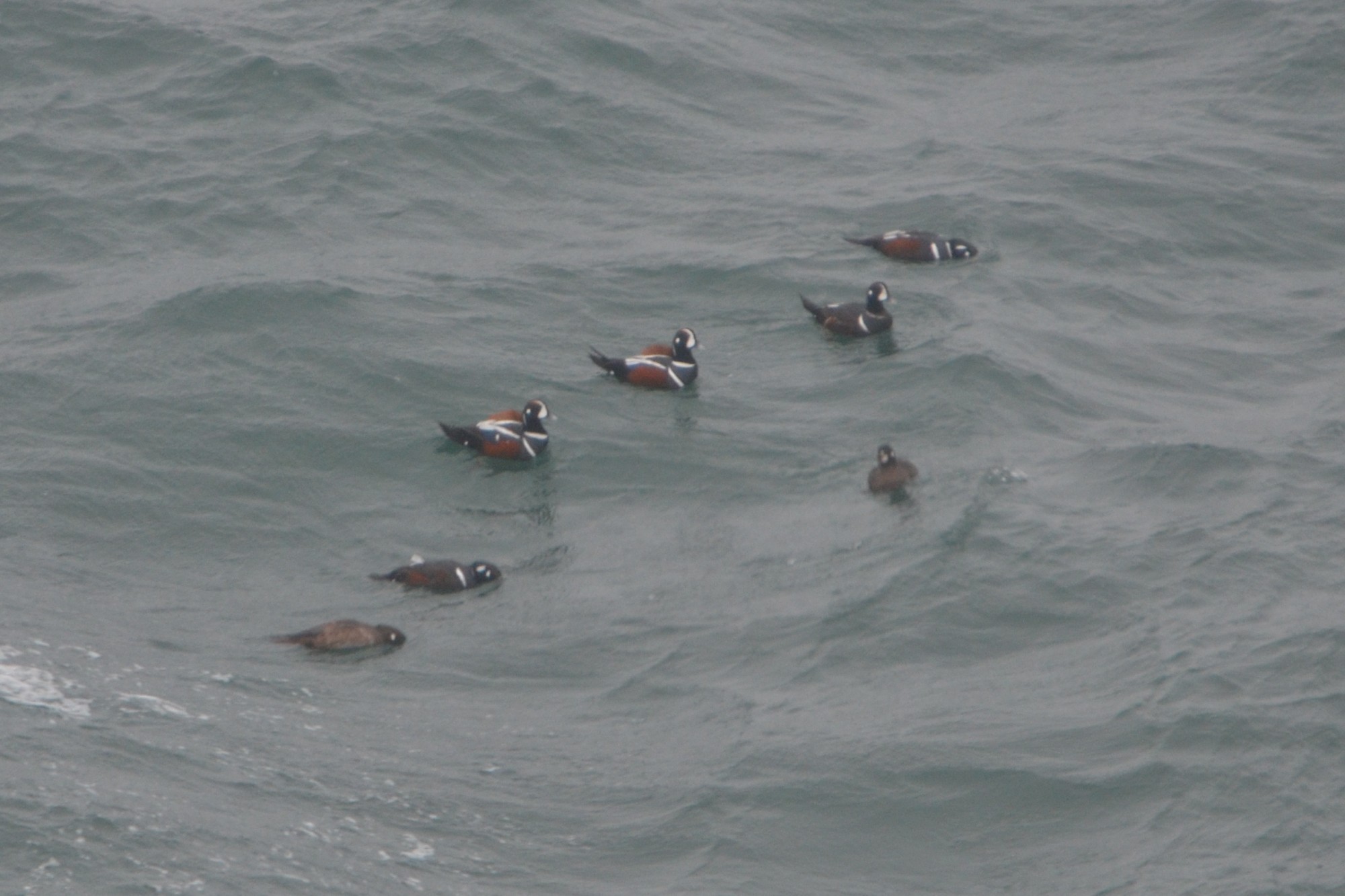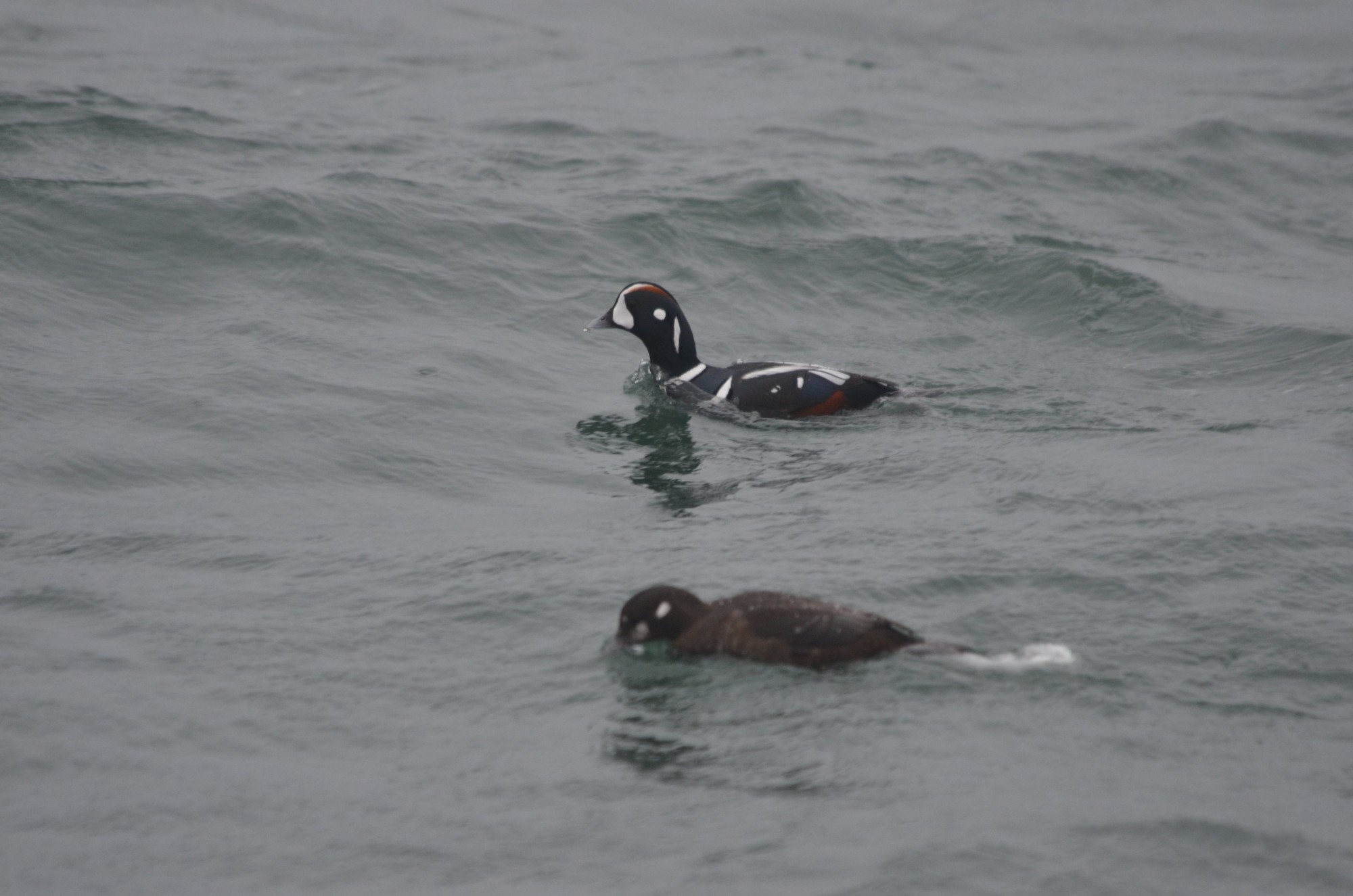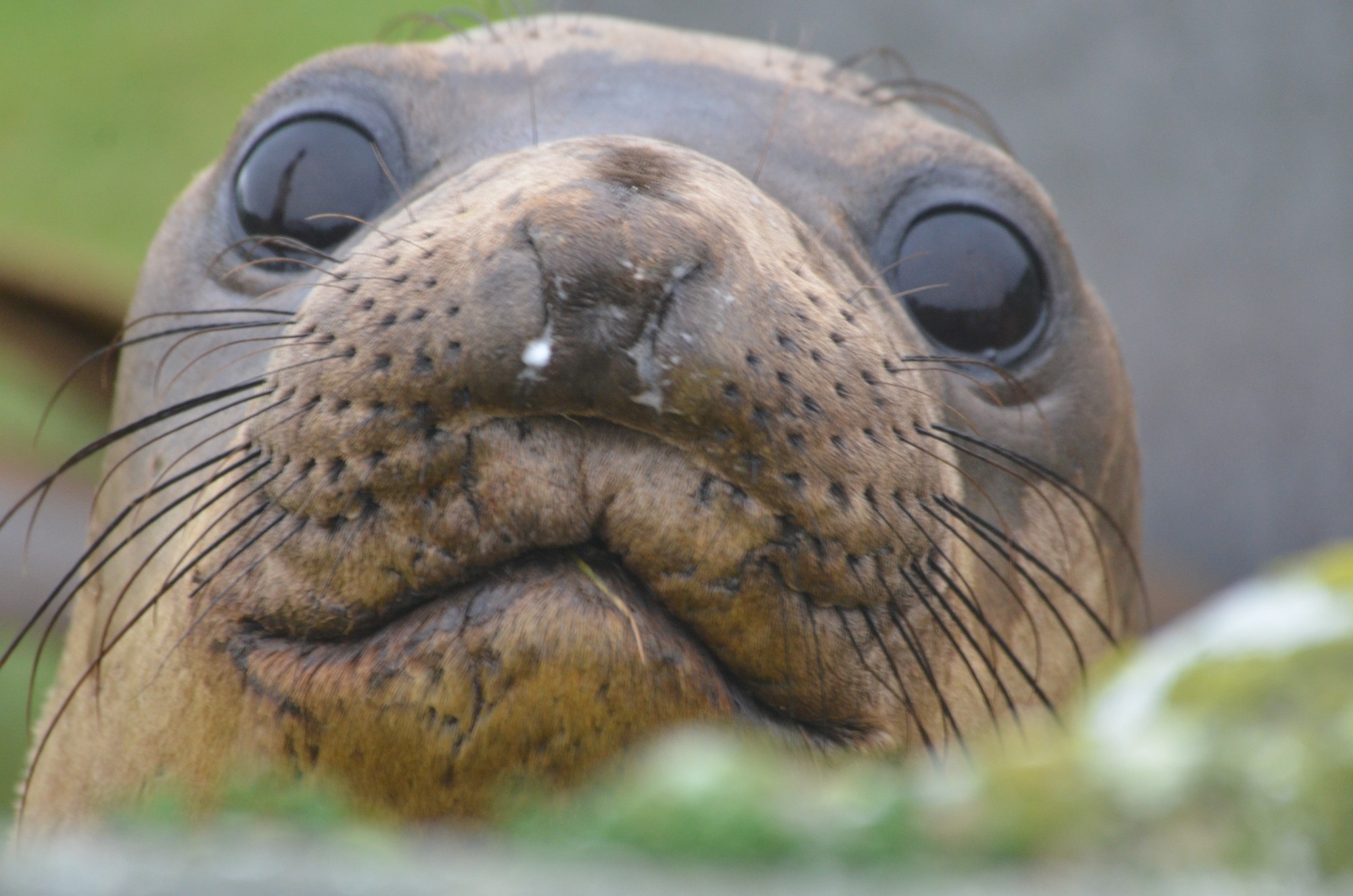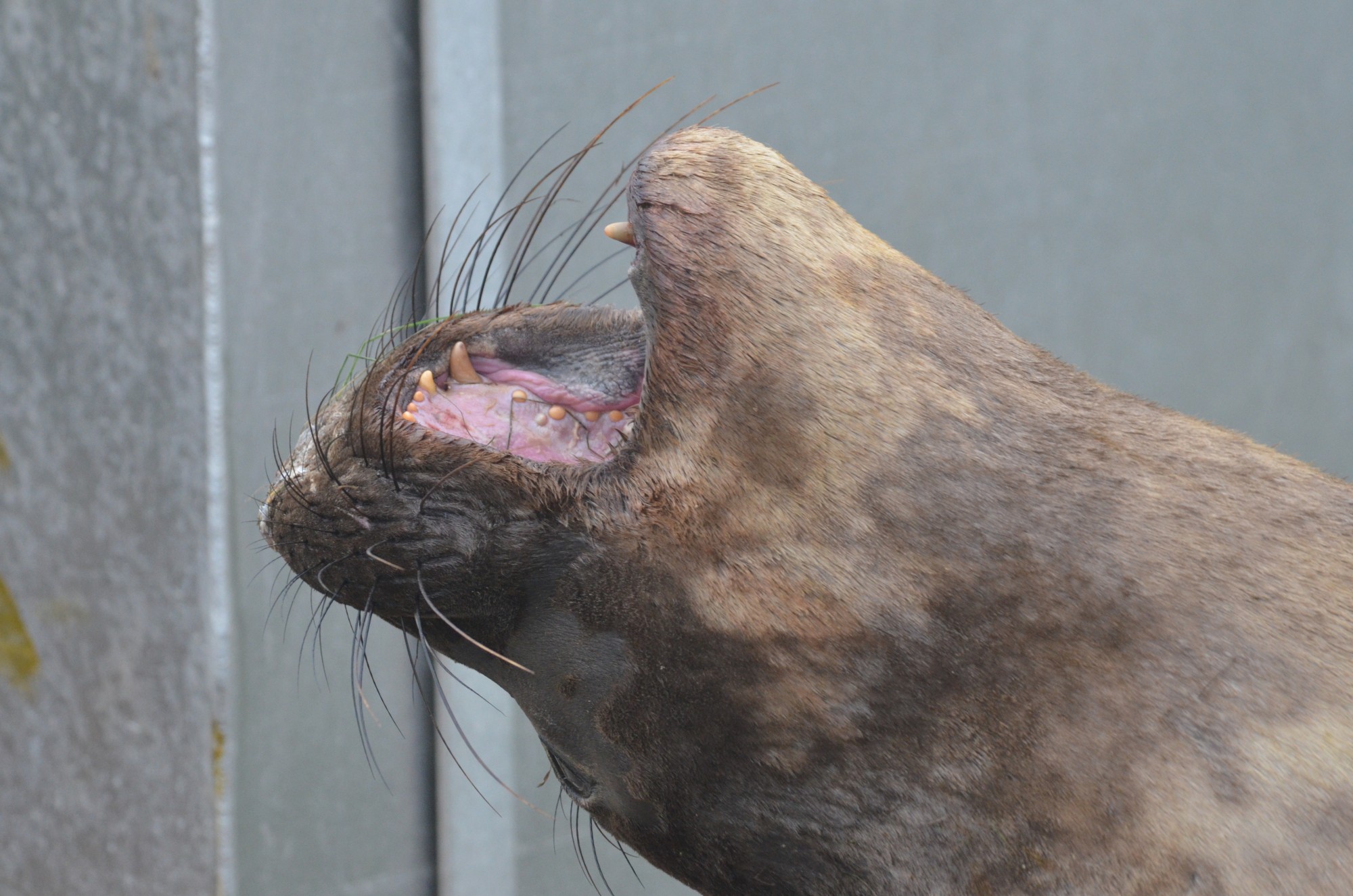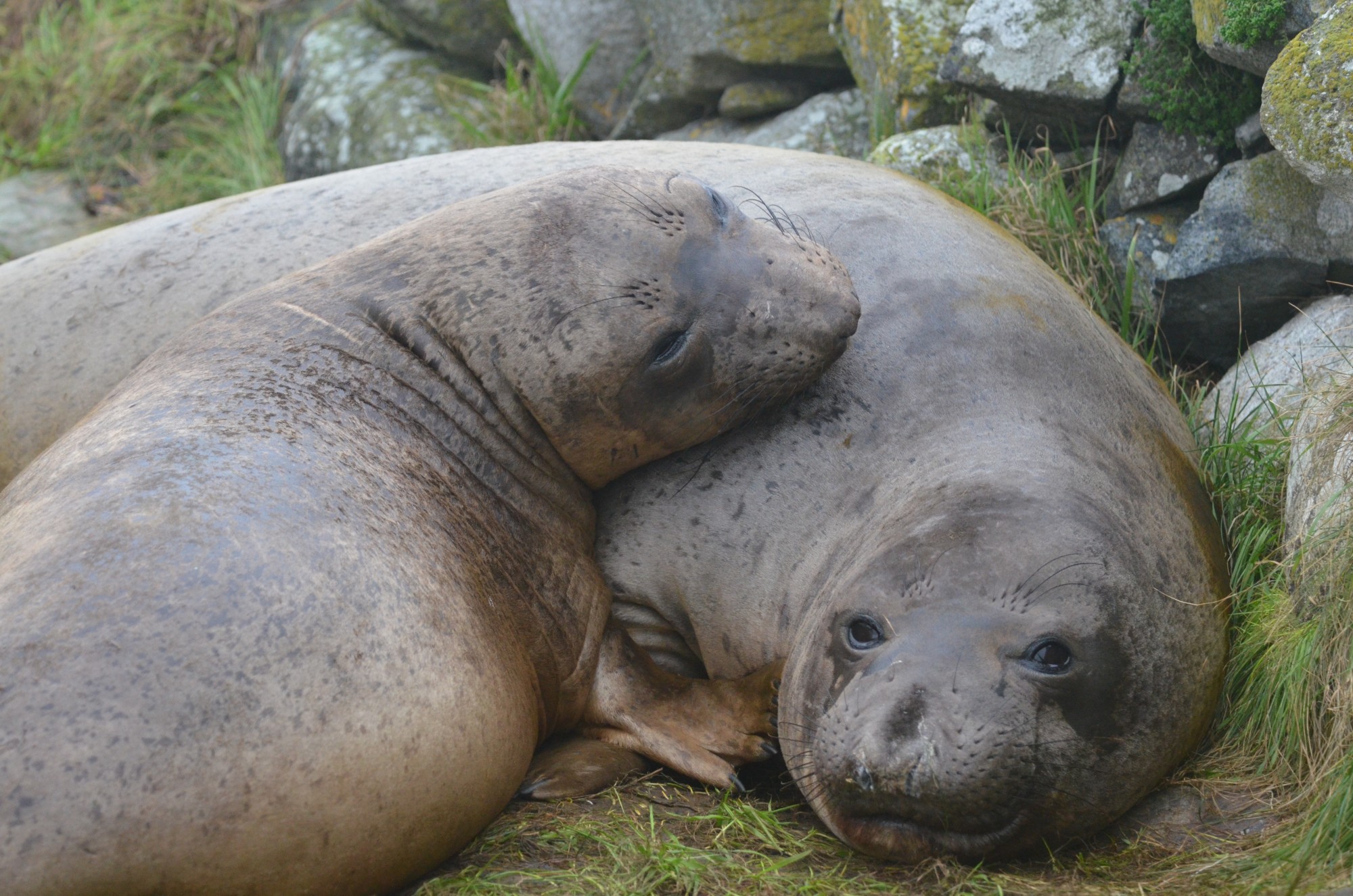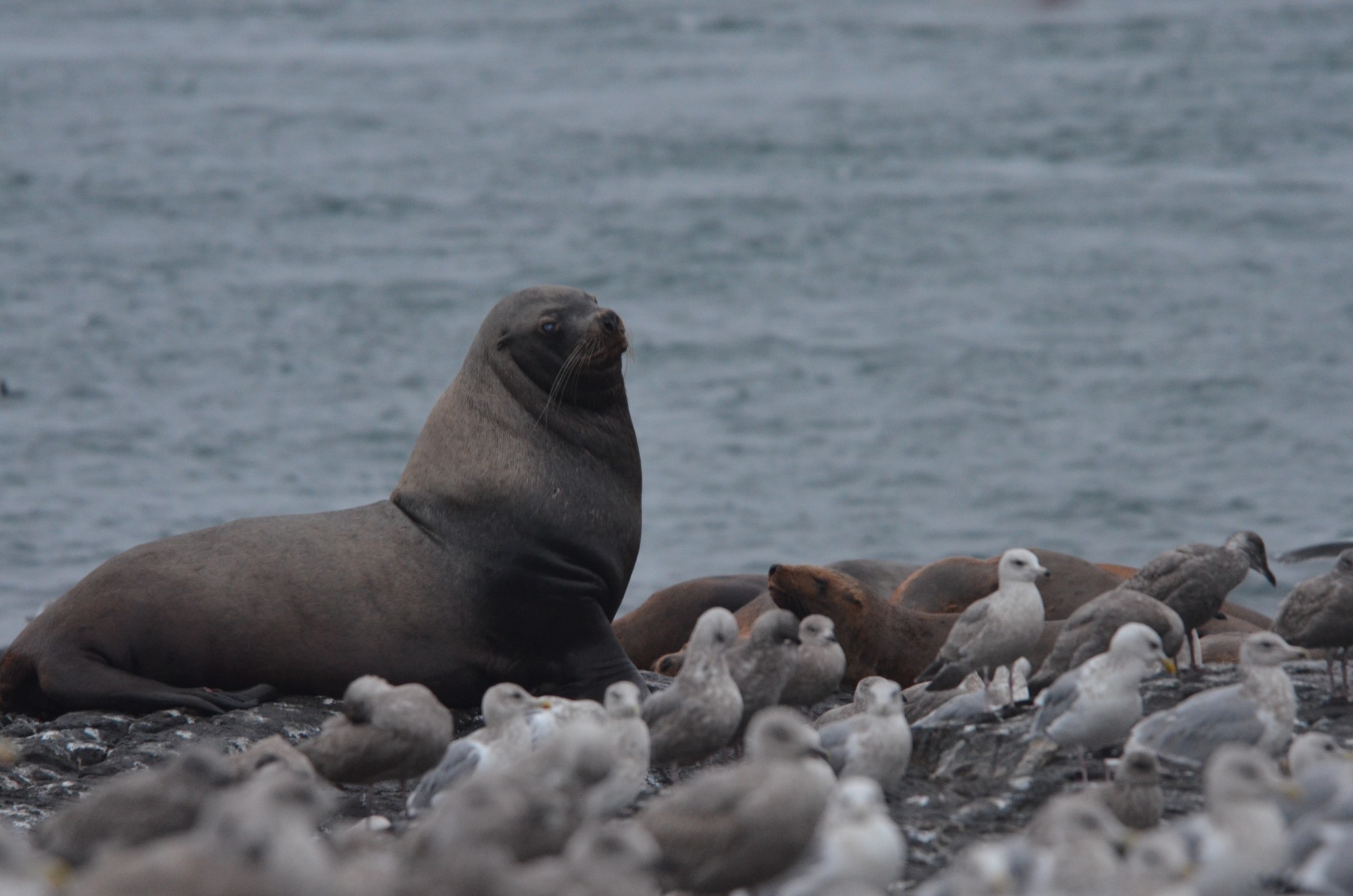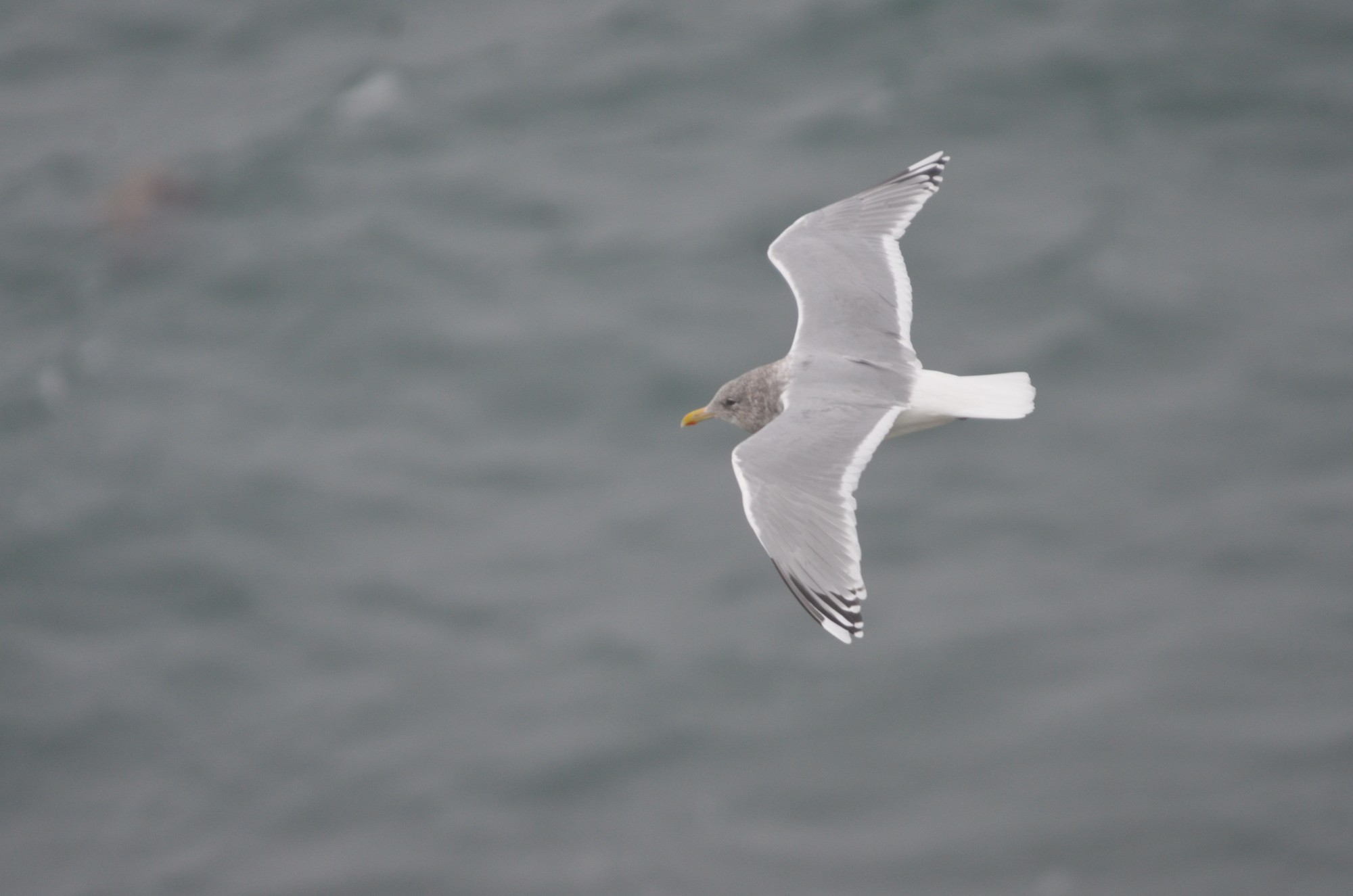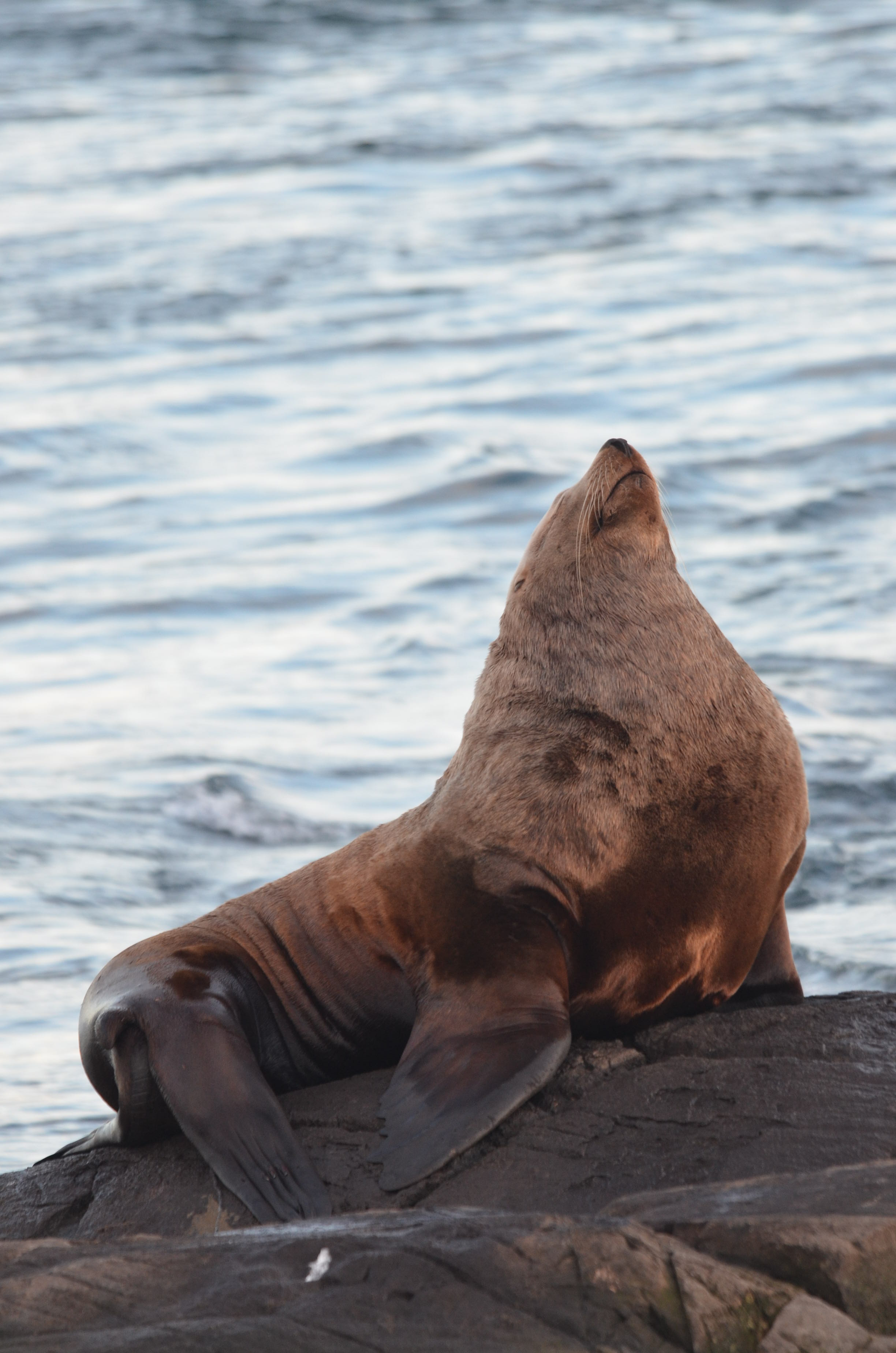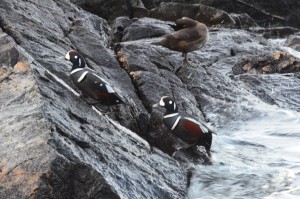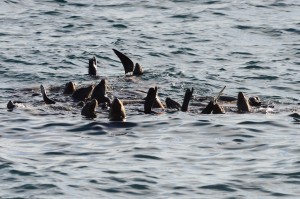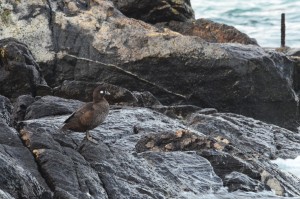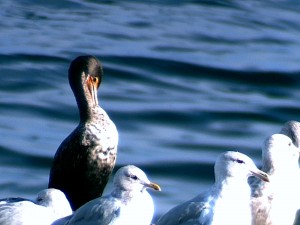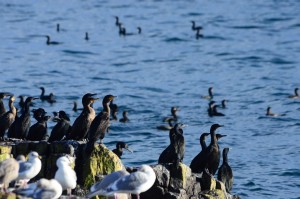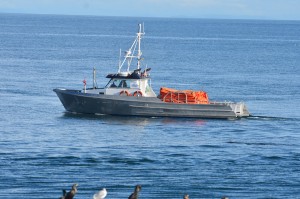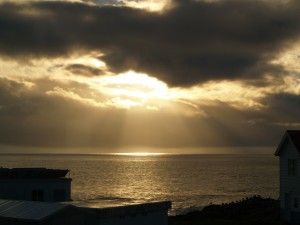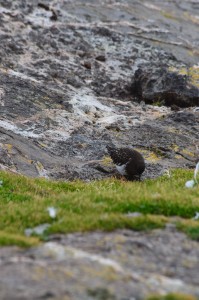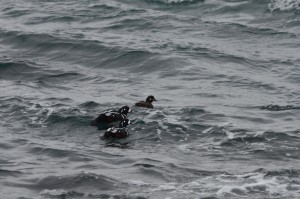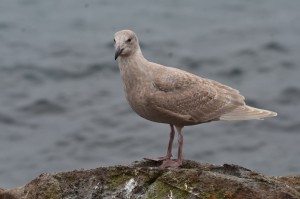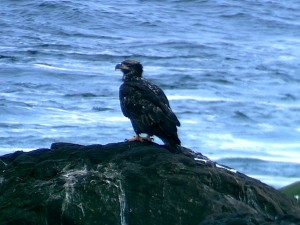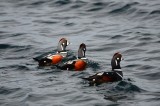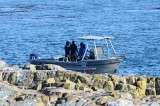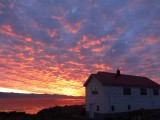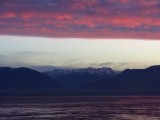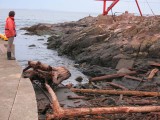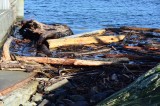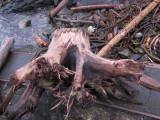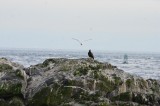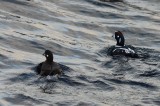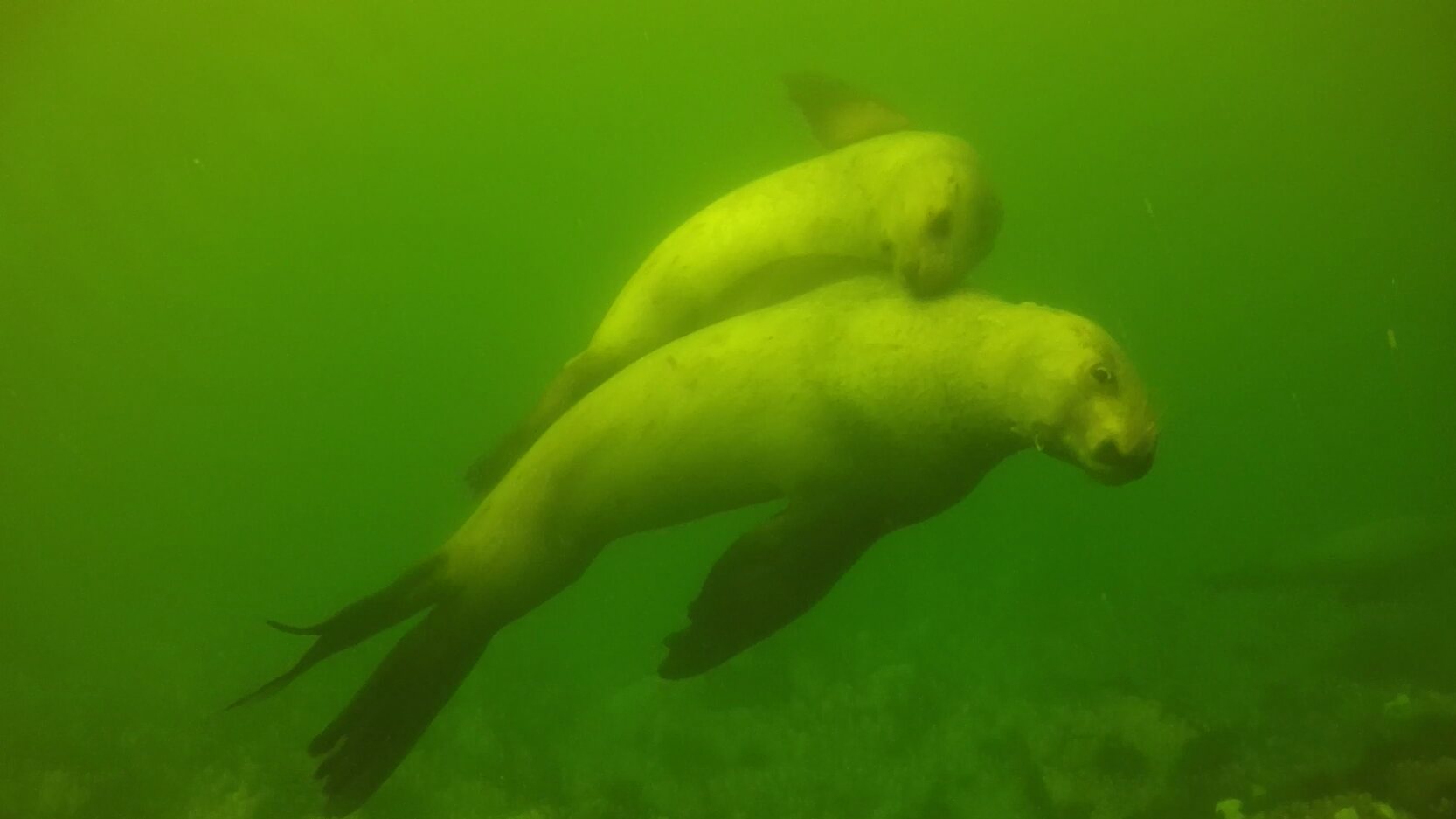
Sea lions visit Pearson College Divers Photo by Jasper Rea.
It was a beautiful day at Race Rocks, with light southeast winds and a mostly clear sky. The barometer fell a little today to ~1013hPA and the forecast for tomorrow is for sunny skies. There is a strong wind warning in effect for overnight with diminishing southeast winds Friday. Rain is forecast for Saturday.
Only four whale-watching vessels were noted in the protected area today and three pleasure craft passed through going slowly. The people on one of those vessels, the Kaos were observed feeding rockfish to sea lions in the Ecological Reserve. It is illegal to feed wildlife and if it happens they will be reported.
Today was animal census day and here are the results.
Animal Census
Steller Sea Lion 321
California Sea Lion 637
Harbour Seal 77
Northern Elephant Seal 9
Sea Otter 0
Humpback Whale (1 observed within one mile of ER southeast of
Great Race)
Canada Goose 23
Harlequin Duck 5
Surf Scoters 11 (flying through to east)
Common Murre 5
Rhinoceros Auklet 4
Double-crested Cormorant 73
Brandt’s Cormorants 25
Pelagic Cormorant 9
Unidentified Cormorants 20
Bald Eagle 1 adult
Black Oystercatcher 11
Black Turnstone 7
Kildeer 2
Glaucous-winged Gull 248
California Gull 3
Thayer’s Gulls 707
Herring Gull 0
Ring-billed Gull 1
Western Gull 2
Heerman’s Gull 14
Mew Gull 0
Unidentified gulls 53
Total gull count 1028
Common Raven 2
Red-winged Blackbird 7 (during count week)
Savannah Sparrow 12
Song Sparrow 2
American Goldfinch 1
American Pipet 1
Don and Nina, the new eco-guardians in-training arrived today. They worked hard all day, after getting up very early to catch the morning slack and are progressing really well in learning some of the idiosyncrasies of Race Rocks operations.

